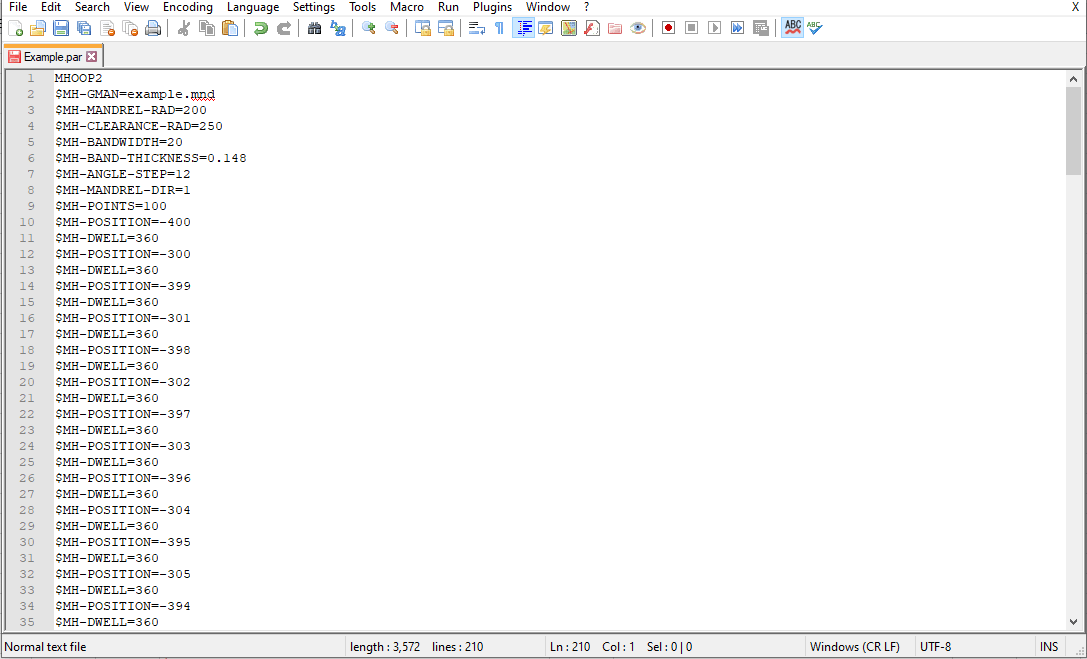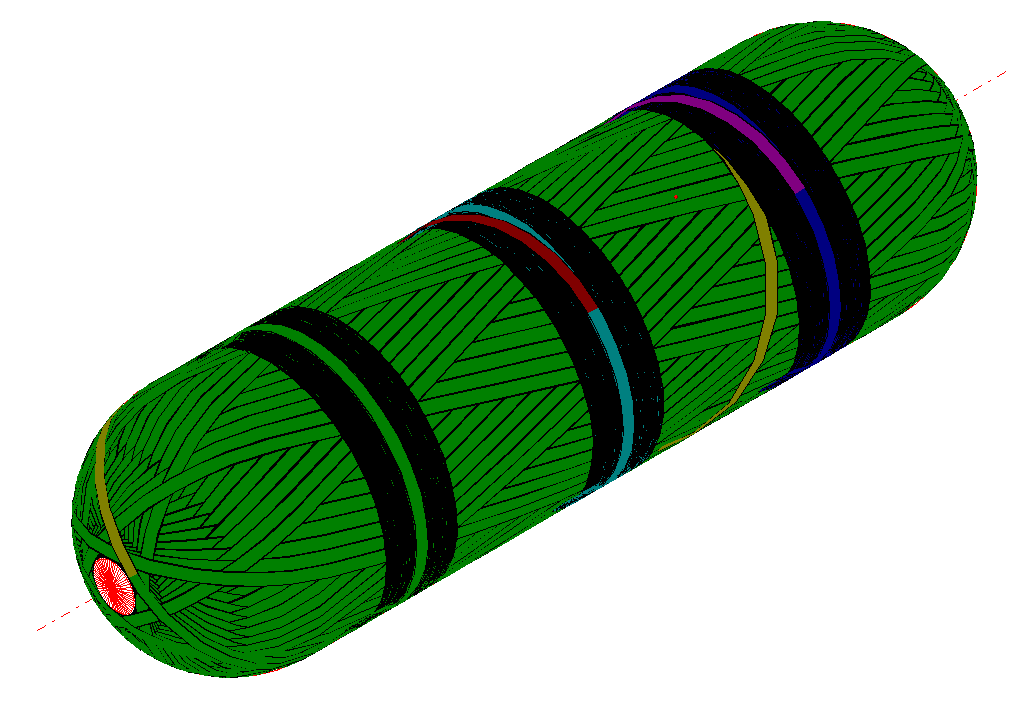Hoop winding using spreadsheet formulae
 Cadfil Help contents
Cadfil Help contents  Cadfil.com Home
Cadfil.com Home
Overview of parameter data via spreadsheet
In the QuickCAD menu there are many options that generate winding program data based on the input of data parameters, bandwidth , wind angle, mandrel radius,.... . In some instances manual input of a lot of data can be tedious and the user may have sets of data that follow some formulaic pattern or design concept. All Cadfil parametric programs save data in text files with the .par extension. It is possible to generate the .par file in some other software such as the Microsoft Excel spreadsheet program. This is a very powerful tool as within the spreadsheet the user can encapsulate their own design philosophy and formulae. This topic discuses making a rib on a cylinder using the multi-hoop option. The rib is made 100 layers thick with each layer being very slightly shorter than the previous layers such that the sides of the rib are tapered.
Choosing which tab to use
From Cadfil 9.51, in the data install folder there is a spreadsheet named MHOOP_example_01.xlsx that is used in this topic, and can be used as a template for modification. Hoop winding programs that progress in a formulaic pattern can be generated in excel using formulae. There are 2 tabs on the spreadsheet for the 2 different programs. The MHOOP tab is used when there isn't a set mandrel. It will create a pipe of the chosen diameter to wind the hoop onto. In contrast the MHOOP2 tab is used when there is already a mandrel created, so that the payout path can be shown on a pre-existing mandrel. The name of the pre-existing mandrel will need to be specified in the spreadsheet, and will need to be in the same folder as the parameter file. Specifying a mandrel is mainly used as a visualisation tool, it doesn't affect the winding program.
The spreadsheet explained
The green text contains the headings that will be read by the cadfil software in a .par file, in the correct order. The black text contains manual entry points, to input data such as mandrel radius, clearance radius and starting x position. The blue text contains data points which can be calculated by formula. In the example shown, x co-ordinates are calculated using the initial x position in cell B10, and a formula using the winding length, and offset, but this can be changed to whatever formula is required to generate the data points. The red text contains the concatenation of the first 2 cells, to give the data which can be copied directly into a .par file.

Creating the '.par' file
The concatenated red text can be copied directly into an existing .par file, or alternatively the text can be coped into a blank text document with the file extension changed from .txt to .par. An example of this is shown below

This .par file can then be opened in the Multi-Hoop Winding QuickCAD, and will populate the table with the information from the spreadsheet

The below picture is taken from an example where 3 radial ribs with tapered sides were created using a formula in excel. Once the formula had been created for the first rib, changing the initial x co-ordinate created the code for the second and third. A video explaining this process, CTV001_Spreadsheet_rib_winding, is available on request.
